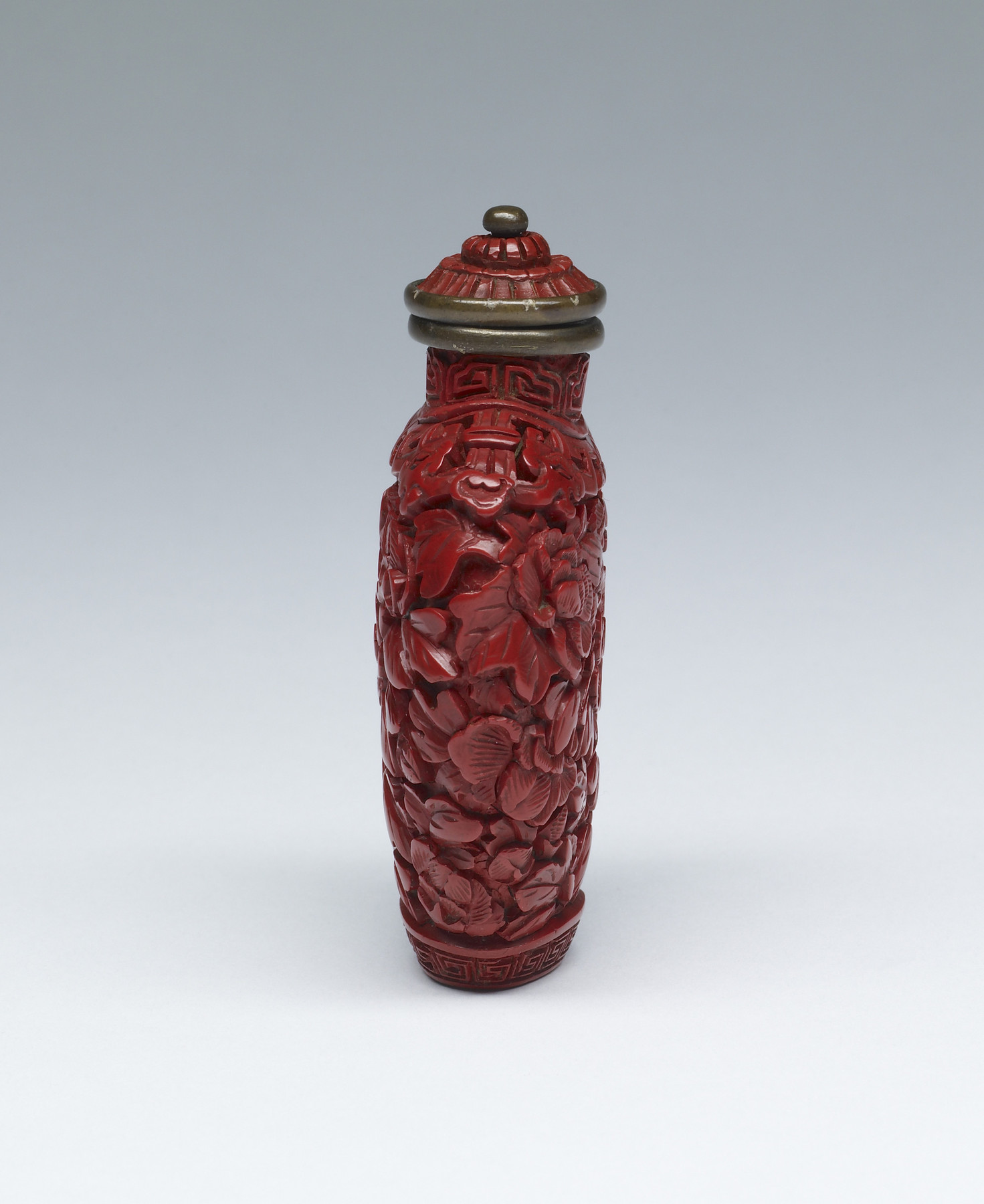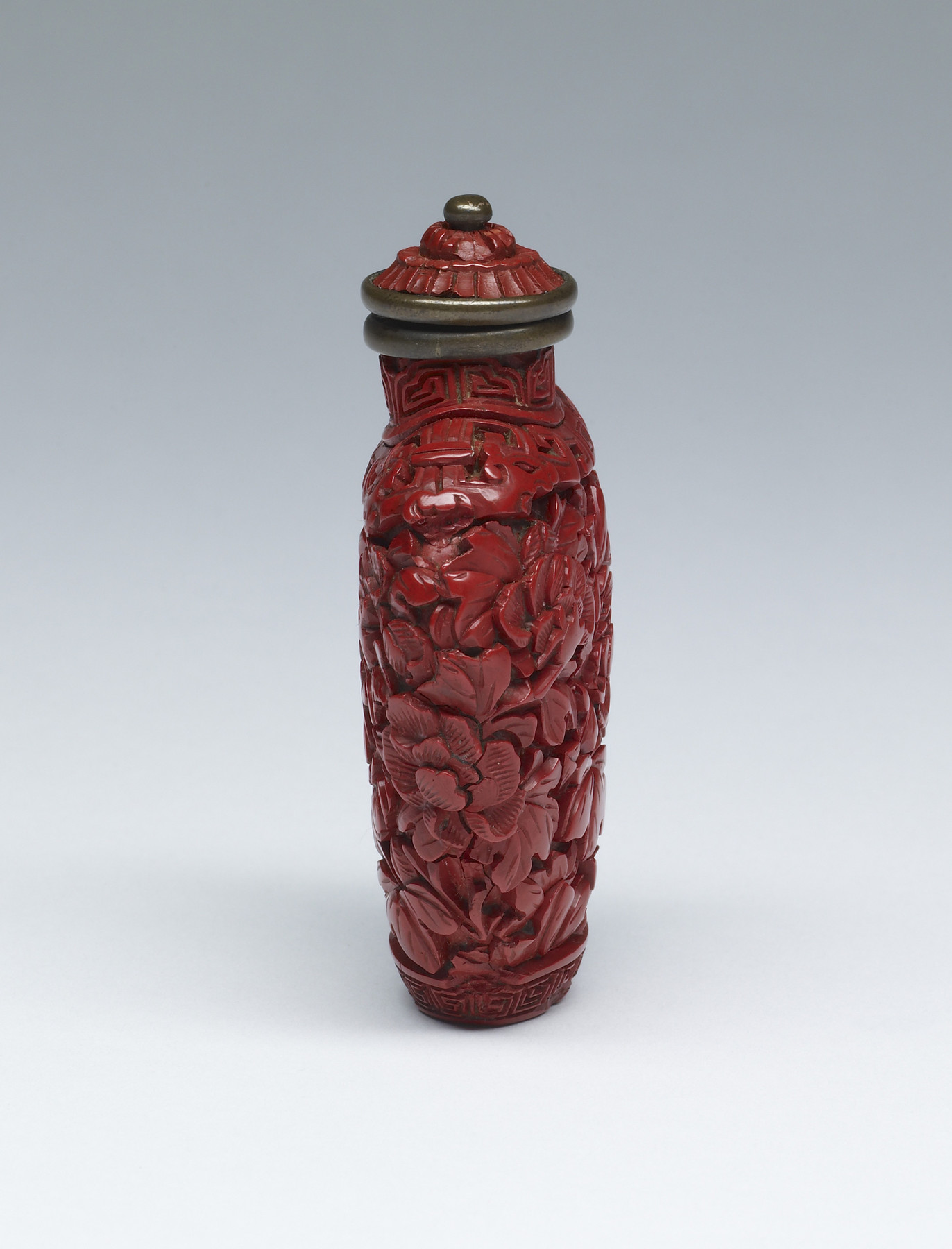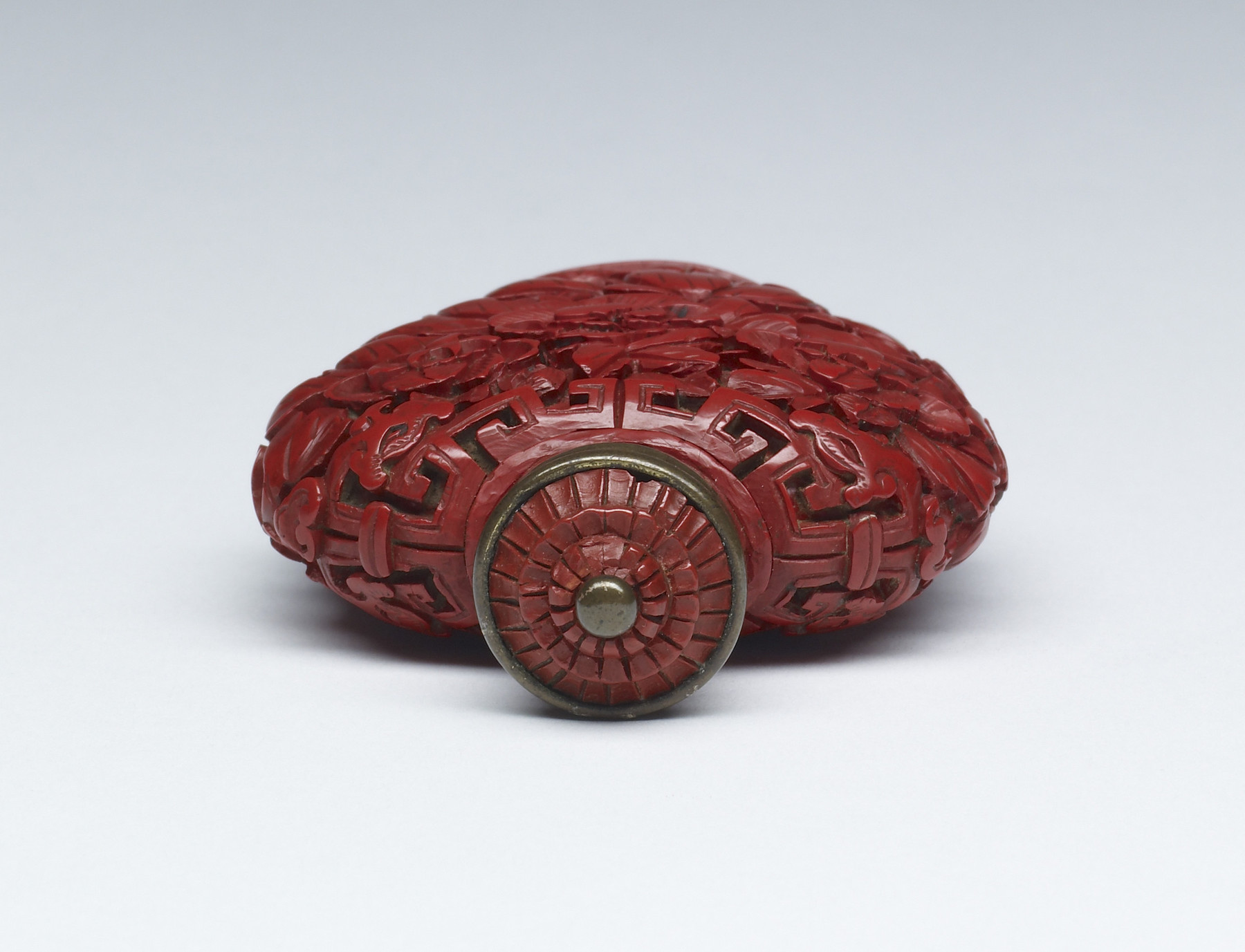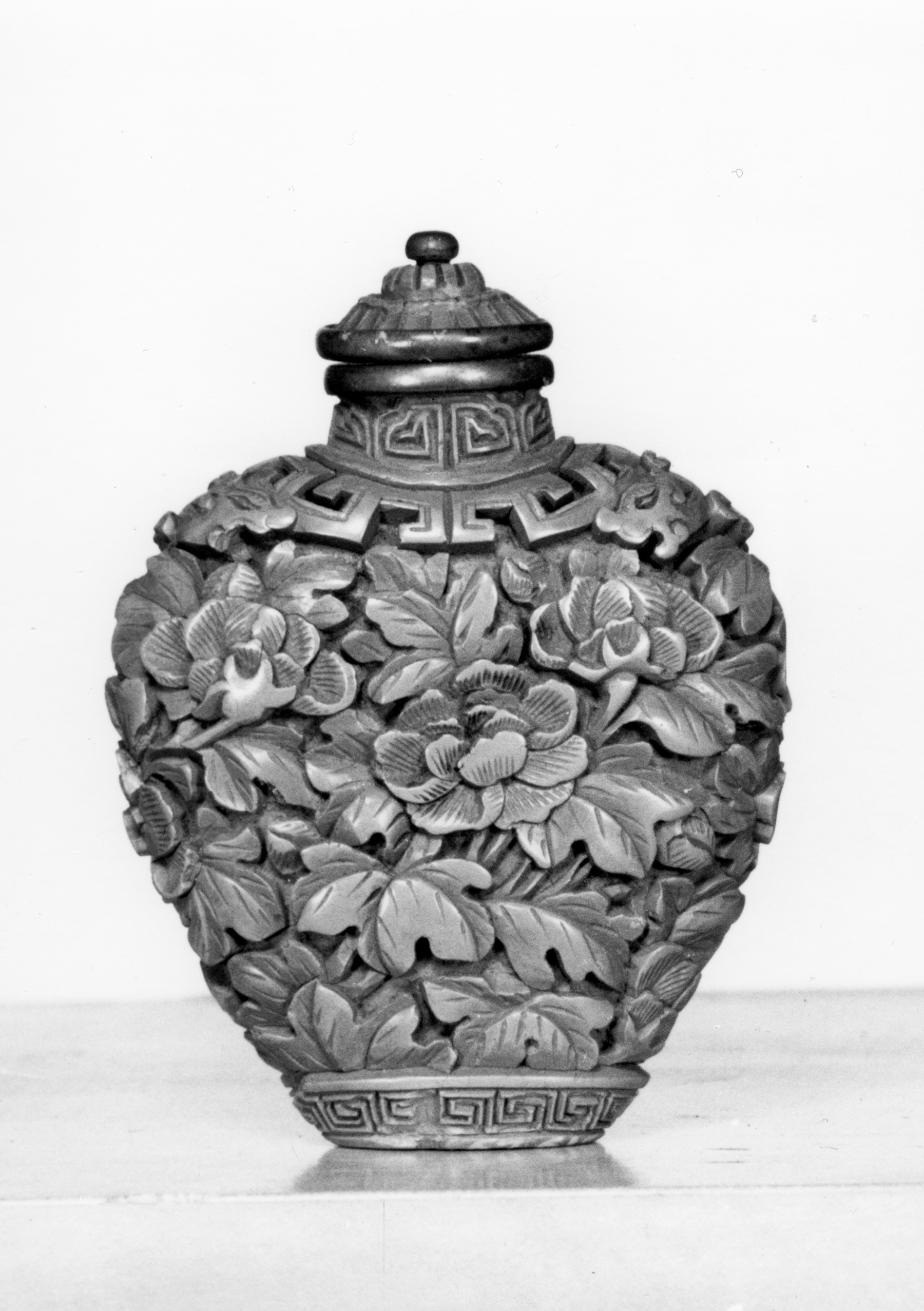Snuff Bottle with Peonies
(China )
Small enough to fit in the palm of the hand and crafted from an extraordinary range of materials, snuff bottles like the two in this case were made to be portable and to keep snuff fresh and pungent, an improvement over the European snuff boxes. An export from Europe, snuff was enjoyed at every level of Chinese society by around 1800. The practice of snuffing from portable bottles spread from China through Central Asia, including to Mongolia. The beauty of the snuff bottles enhanced the experience. They were cherished as personal adornments and offered as gifts.
Provenance
Provenance (from the French provenir, 'to come from/forth') is the chronology of the ownership, custody, or location of a historical object. Learn more about provenance at the Walters.
William T. Walters, Baltimore [date and mode of acquisition unknown]; Henry Walters, Baltimore, 1894, by inheritance; Walters Art Museum, 1931, by bequest.
Exhibitions
| 2018 | Chinese Snuff Bottles. The Walters Art Museum, Baltimore. |
| 2000-2001 | Chinese Snuff Bottles. The Walters Art Gallery, Baltimore. |
Geographies
China (Place of Origin)
Measurements
Overall H: 2 3/4 × W: 2 1/16 × D: 13/16 in. (7 × 5.2 × 2 cm); Bottle H: 2 3/8 × W: 2 1/16 × D: 13/16 in. (6 × 5.2 × 2 cm); Stopper H: 2 5/16 × Diam: 11/16 in. (5.9 × 1.8 cm)
Credit Line
Acquired by William T. Walters
Accession Number
In libraries, galleries, museums, and archives, an accession number is a unique identifier assigned to each object in the collection.
In libraries, galleries, museums, and archives, an accession number is a unique identifier assigned to each object in the collection.
67.616
















